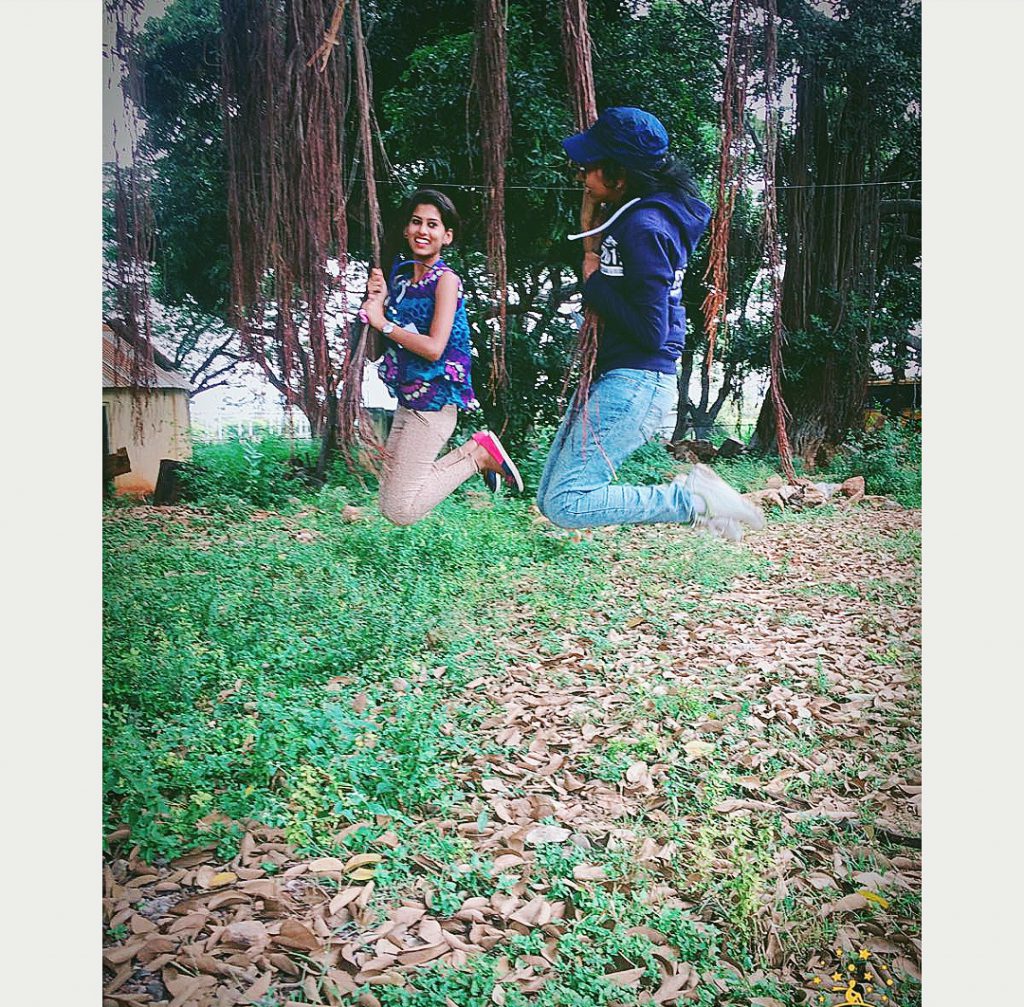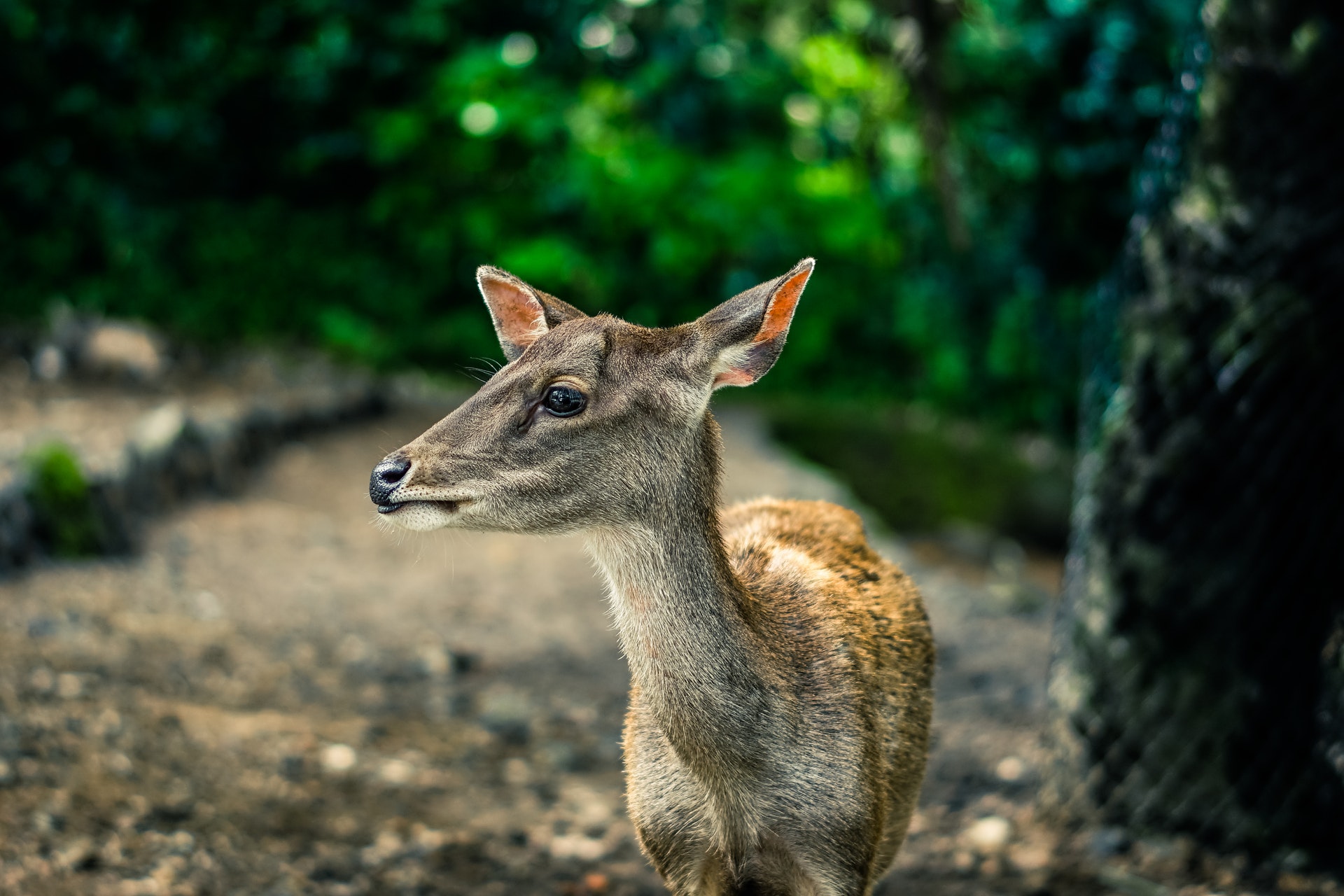In less than 2 hours time, my classmates and I; from B.Sc Environmental Science accompanied by our seniors from JSS Universty, Mysuru were taken to The Chennakesava Temple or Kesava Temple, a Vaishava Hindu temple located at the banks of the river Kaveri, Somanathapura, Karnataka, India.

Since we were not assisted by guides to honor our visit, we decided to just immerse ourselves in the architectural beauty the temple held display for us.
The pillars, ceilings and walls of the temple are made from carved stones that narrates theological iconography of the Hindu religion. I tried to decipher the carvings on my own and I was able to come across scenarios representing the Bhagvad Gita, Mahabharata and The Ramayana.
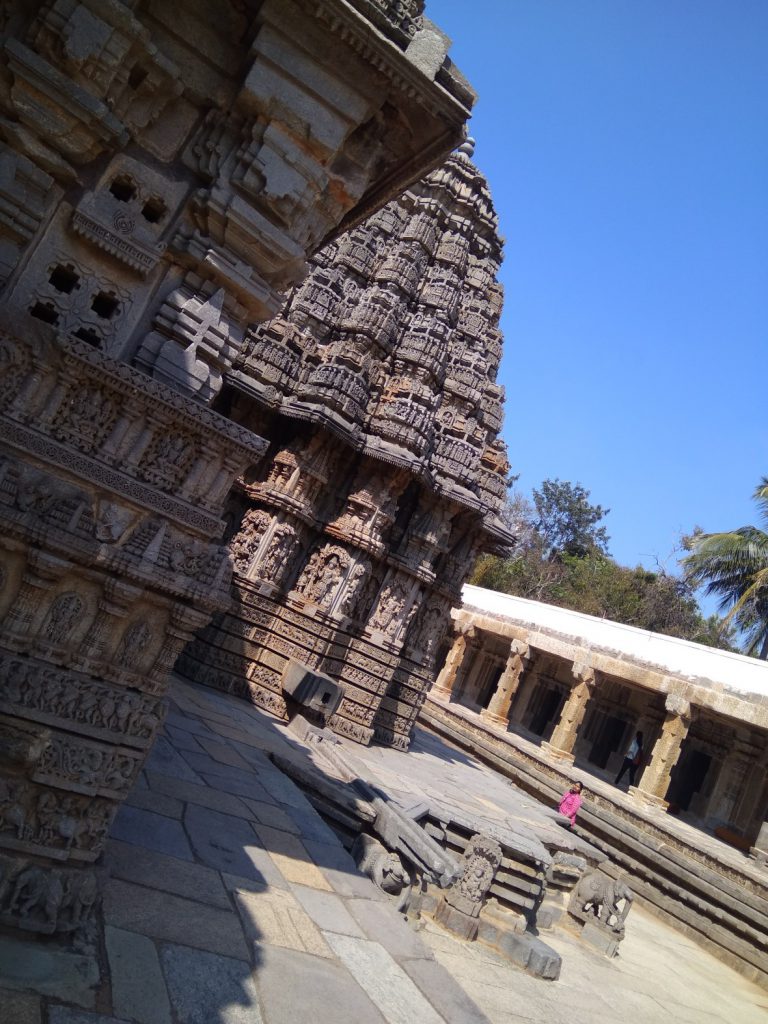
The main temple is star-shaped. The inside has been carved in such a way that light enters to illuminate the dark inside hollow.

We could only spend less than 30 minutes there which was definitely not enough time to run my fingers over every inscription, to feel the pain and hard-work put in by the workers and to understand the perspectives of the 13th century universe.
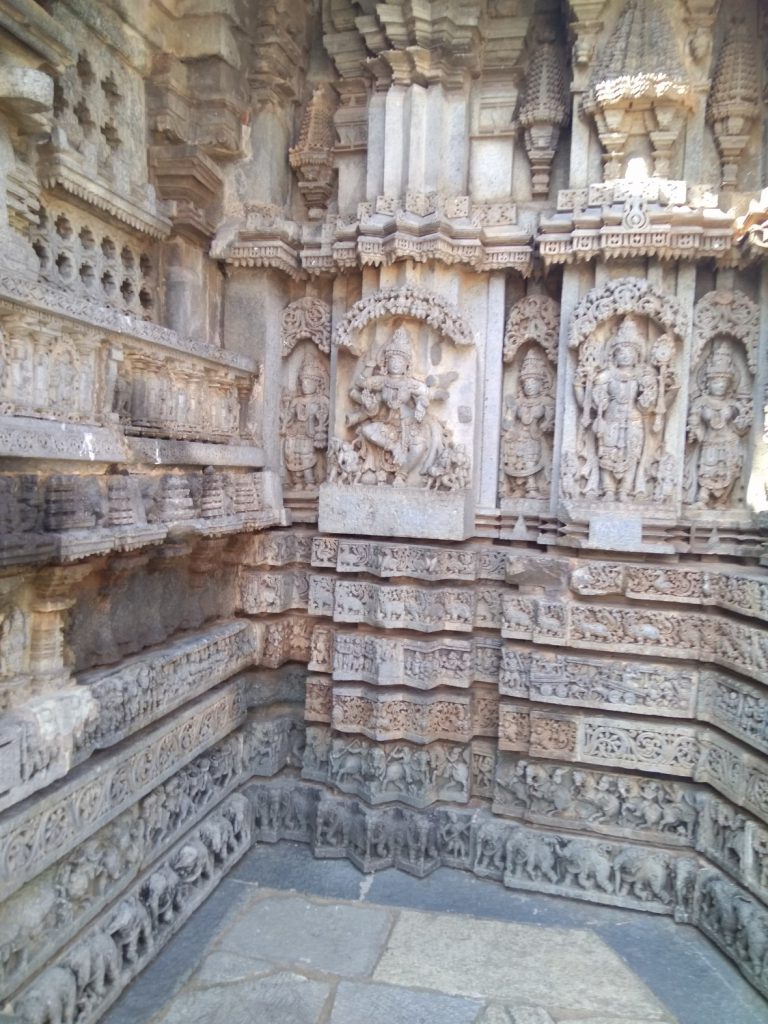
Our next destination was to a solar power plant to understand the need and usefulness of alternative sources of energy. We spent only about 1 hour over there. One of the officials of the place explained to us about the working of the plants and its distribution across Mysuru. The Plant was set up in 2015 and powers more than half of Mysuru. We were shown the Grid and explained how the substations divided the power.
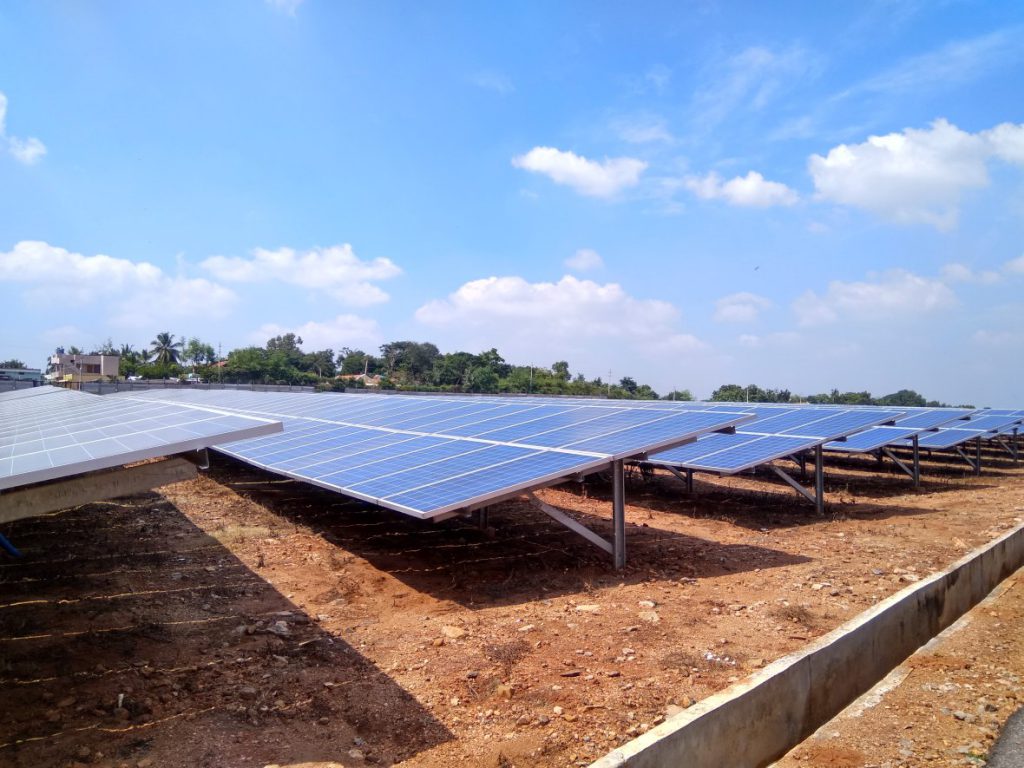
After lunch, we visited the Gaganachukki falls, Kollegal. At that point I realized that all I could do was enjoy the view of the waterfalls through a railing. That was the only strong connection I could share with the falls. Human beings have grown so detached from the ecosystem that it felt odd to even try thinking about fitting in.
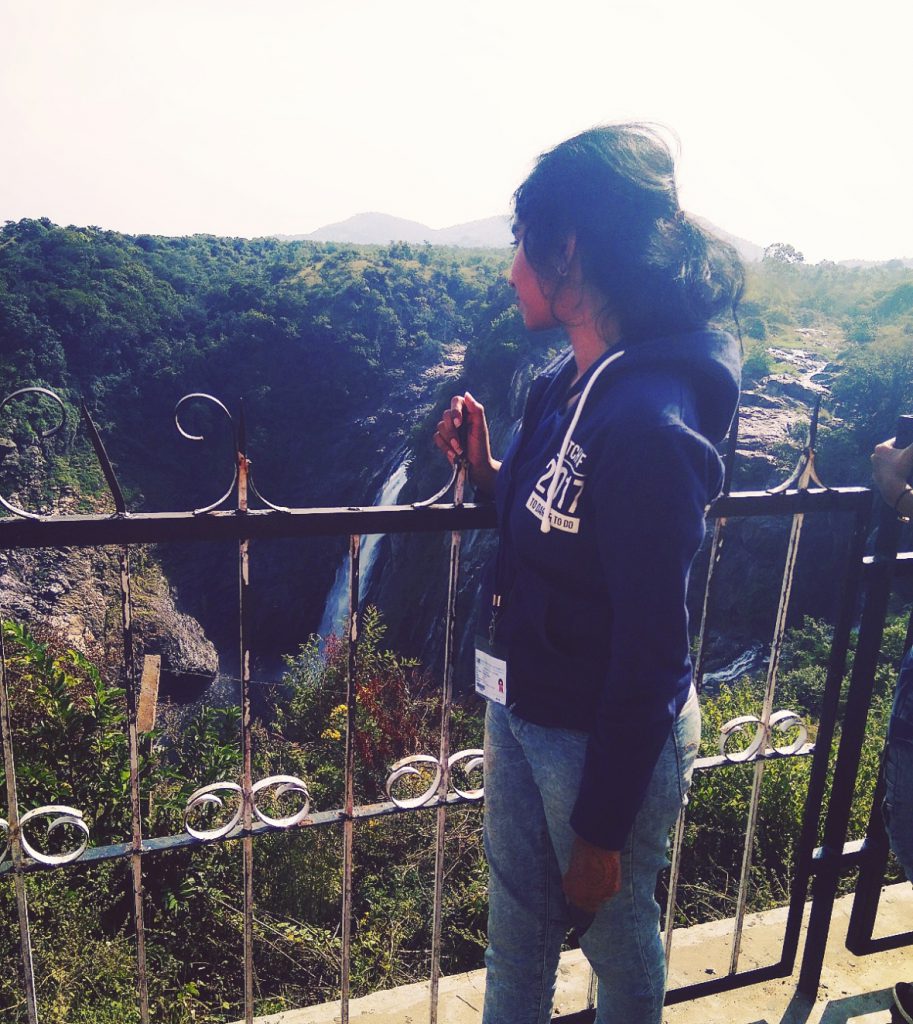
I observed how the macaques made this place their home and how relaxed they were from their body language. The chirping birds made the trees that tower on the surrounding hills their paradise. There is a bound ecosystem to which we are blind.
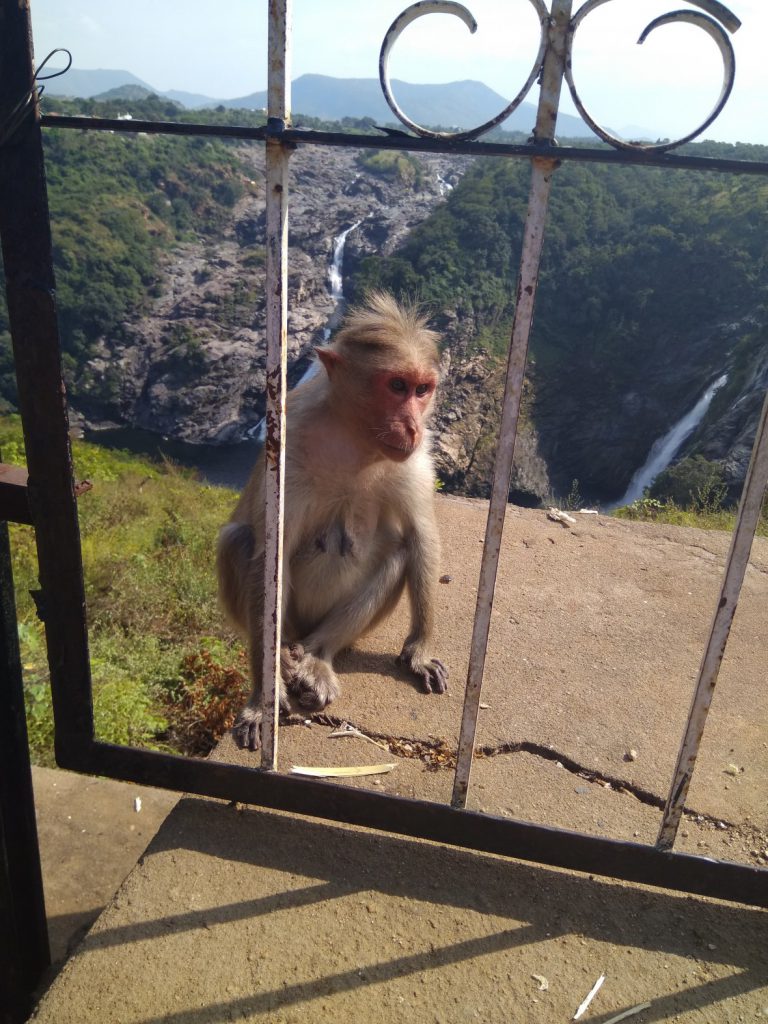
The thunder from the falls should have awakened our souls and made us think about strengthening the roots that grow towards nature strong. But, I guess we became deaf and blind to the world around us. Ironic that we call ourselves future Environmental scientists.
Our last destination was to the where the Kaveri river ends. It is a tourist place and we stopped there to stretch our legs.
Even though the Industrial visit was to teach us about the solar power plants, personally what I learnt is that we Homo sapiens are leaning to the direction of disconnecting completely from nature. I felt heart-burnt the more I stood there watching the magnificent falls because I felt helpless. I wanted to shed away from all that I have in this anthropological world and jump into that dimension of lustrous ecological habitations that hold my roots. Probably, we stitched wings to our skin that made us to never look back on the tracks we left as scars on Nature’s soul.
